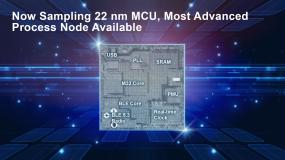The wireless microcontroller, which incorporates Bluetooth 5.3 Low Energy, utilizes the most advanced process node currently accessible for MCUs.

Renesas Electronics Corporation has introduced the first microcontroller (MCU) manufactured using advanced 22-nm process technology. According to the press release issued by the company, the MCU delivers superior performance and reduced power consumption through lower core voltages. The advanced process technology allows for integrating a wide range of features, including RF capabilities. The MCU features Bluetooth 5.3 Low Energy (LE) and a software-defined radio (SDR) integration. With the ability to upgrade application software and Bluetooth capabilities, compliance with the latest specification versions is assured, both during development and after deployment.
The company claims that with a single device, developers can seamlessly incorporate functionalities such as direction-finding applications utilizing Bluetooth 5.1 Angle of Arrival (AoA) / Angle of Departure (AoD) features or enable low-power stereo audio transmission through Bluetooth 5.2 isochronous channels. This streamlined approach simplifies development by consolidating multiple features into a single device. The processor uses a smaller die area for the same functionality, resulting in smaller chips with higher integration of peripherals and memory. The MCU paves the path for future-generation devices that assist customers in future-proofing their designs and guaranteeing long-term availability.
“Renesas’ MCU leadership is based on a wide array of products and manufacturing process technologies,” said Roger Wendelken, Senior Vice President in Renesas’ IoT and Infrastructure Business Unit. “We are pleased to announce the first 22-nm product development in the RA MCU family, which will pave the way for next-generation devices that will help customers to future-proof their design while ensuring long-term availability. We are committed to providing the best performance, ease of use, and the latest features on the market. This advancement is only the beginning.”
The company plans to provide a collection of winning combinations by integrating the newly developed 22-nm MCUs with a diverse range of compatible devices from its portfolio. These Winning Combinations consist of system architectures thoroughly assessed for technical compatibility, allowing them to seamlessly collaborate and provide optimized, low-risk designs for accelerated time to market.
For more information, click here.








